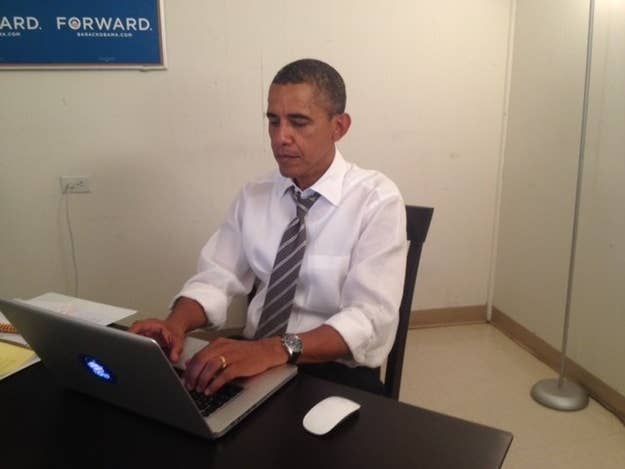
The 2012 election proved that while a well-run digital campaign may not be enough to win you the election, a bad one can help you lose it. And moving forward, any winning national or state campaign must know that to fund-raise, mobilize, and persuade, it has to place a new emphasis on data capture and usage.
The Obama campaign began this cycle with a huge leg up online. Having been running for president for the better part of four years and having been in national office for two, the president had amassed a huge database of small-dollar donors, supporters, e-mail addresses, and Facebook fans. There’s no doubt that the institution of the presidency awarded his candidacy advantages and attention that the Republican candidates could never reach. That said, the Obama campaign deserves credit yet again for an incredibly well-run digital operation, one that broke the barriers that they themselves had set in 2008.
Simply put: The Obama campaign understood how to empower individuals through technology. Arguably the best use of technology this cycle, the campaign's downloadable canvass application allowed users to walk their neighborhoods without needing to visit a local campaign office. While not always perfect, the Obama campaign used various rich data points borrowed from Facebook to send targeted e-mails around Election Day, urging people to help encourage specific friends in battleground states to vote for Obama. Supporters would open up their e-mail to see pictures of their friends staring at them, and with the click of a mouse could write testimony on their digital Facebook walls.
Republicans squabbling about messaging and reaching youth often have a common misconception that only young people are active online. At one point in the campaign, Ted Cruz’s average online donor was 55 and Newt Gingrich’s most active audience on Facebook were people 45+. Certainly issues that motivate a 55-year-old man in Florida to take action online are drastically different than those motivating a 25-year-old woman in New York. Most Republican campaigns this cycle lost out on harnessing the animosity online against Obama into anything tangible. Facebook messages, e-mails, and tweets often talked at voters, and not with them, missing the intimacy that digital communications allows.
Perhaps part of the issue is that Republican campaigns in particular have become focused on ad spending as a metric of success in a specific medium. If you look at tracking polls, the truth is that 90+% of the electorate was always polarized and already decided in this election before a single ad ran. Billions of dollars ran on television from super PACs trying to persuade and reach a small percentage of the electorate in each swing state, while virtually nothing went into creating forward-looking technologies that would be around to help the movement regardless of election results.
Sure, the Obama campaign spent money on television, but it also understood the marketing power in using others to advocate its brand. It knew that a voter sharing an advertisement on a friend’s wall was ultimately more powerful and a better use of money than costly and inefficient broadcast buys. There’s no doubt that television continues to be the dominant place people consume media, but does that necessarily mean it is the best place to persuade a voter? Pollsters, often among the smartest people working on campaigns, can help answer that question, but sometimes even they might need a little help.
A question I saw in the field this cycle asked, “What social network do you use the most?” with answers of Google, MySpace, Facebook, or Twitter. The results came back skewed heavily toward Google. Not because Google is dominant but because the question confused the voter by implying that Google’s search engine was a social network (Google’s social network is dwarfed by Facebook, in reality). The fact that MySpace still appeared as a serious answer also highlights the hard road we have ahead.
Another question I saw multiple pollsters ask this cycle was, “How often do you use the Internet to consume political news and information?” The responses came back unsurprisingly bleak and in one case was used to slash the digital budget. But is the voter watching Dancing with the Stars in Ohio consuming political news and information? Is the voter listening to country-music radio in Iowa consuming political news and information? A more relevant question would ask how voters use the Internet in terms of time and media consumption patterns.
In many cases consultants continue to hold digital to a higher standard, refusing to give money without knowing the immediate return on investment. Republicans cannot run successful forward-looking campaigns with this continuing to be the case. The Romney campaign certainly deserves credit for being able to utilize relationships to get digital properly funded, something that hadn’t been done in the previous cycle. The Republican Party as a whole, however, should yet again look to Obama’s use of technology as a means to empower individuals and figure out the best way to spend its money. We simply can’t afford not to.
